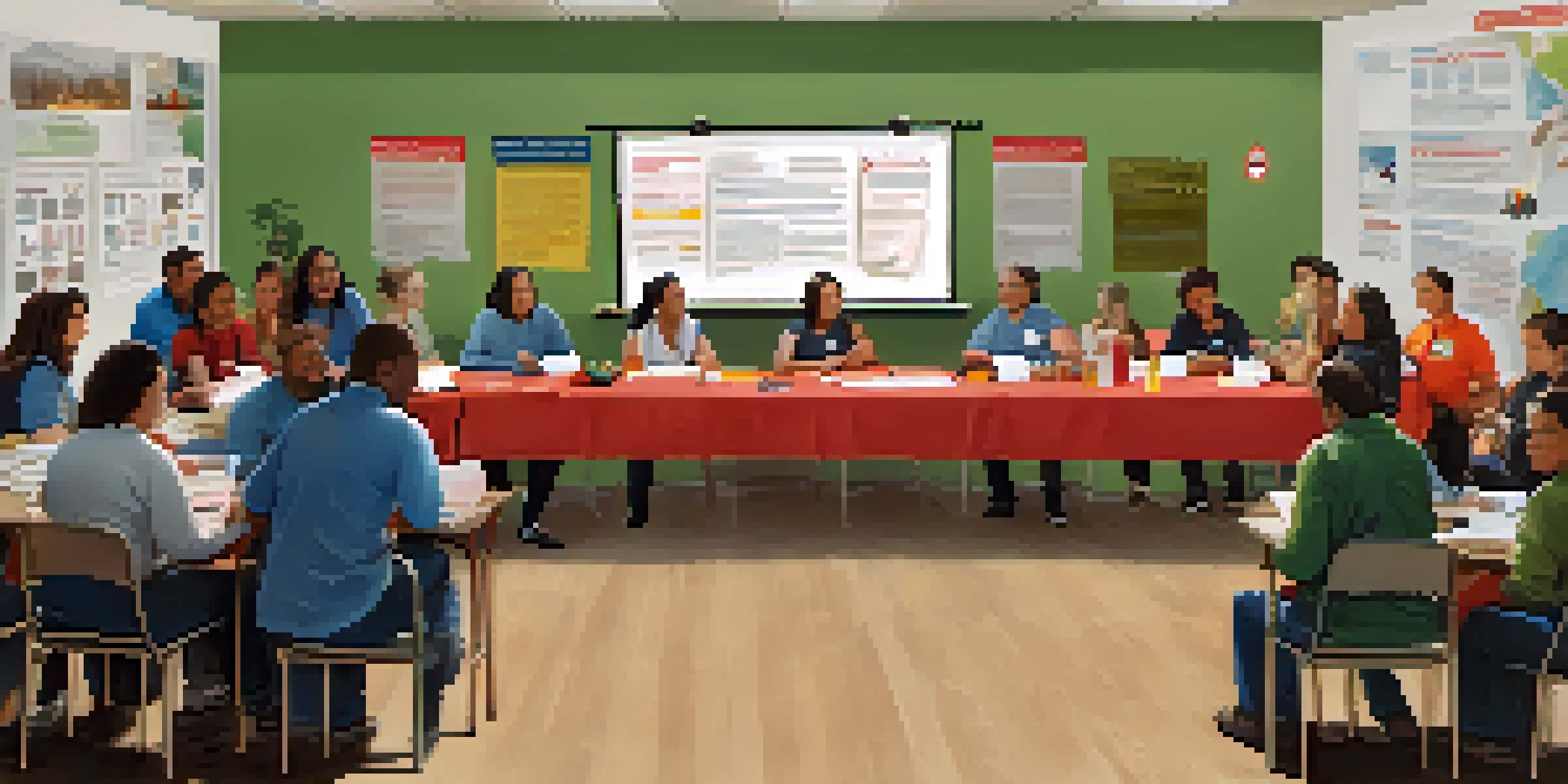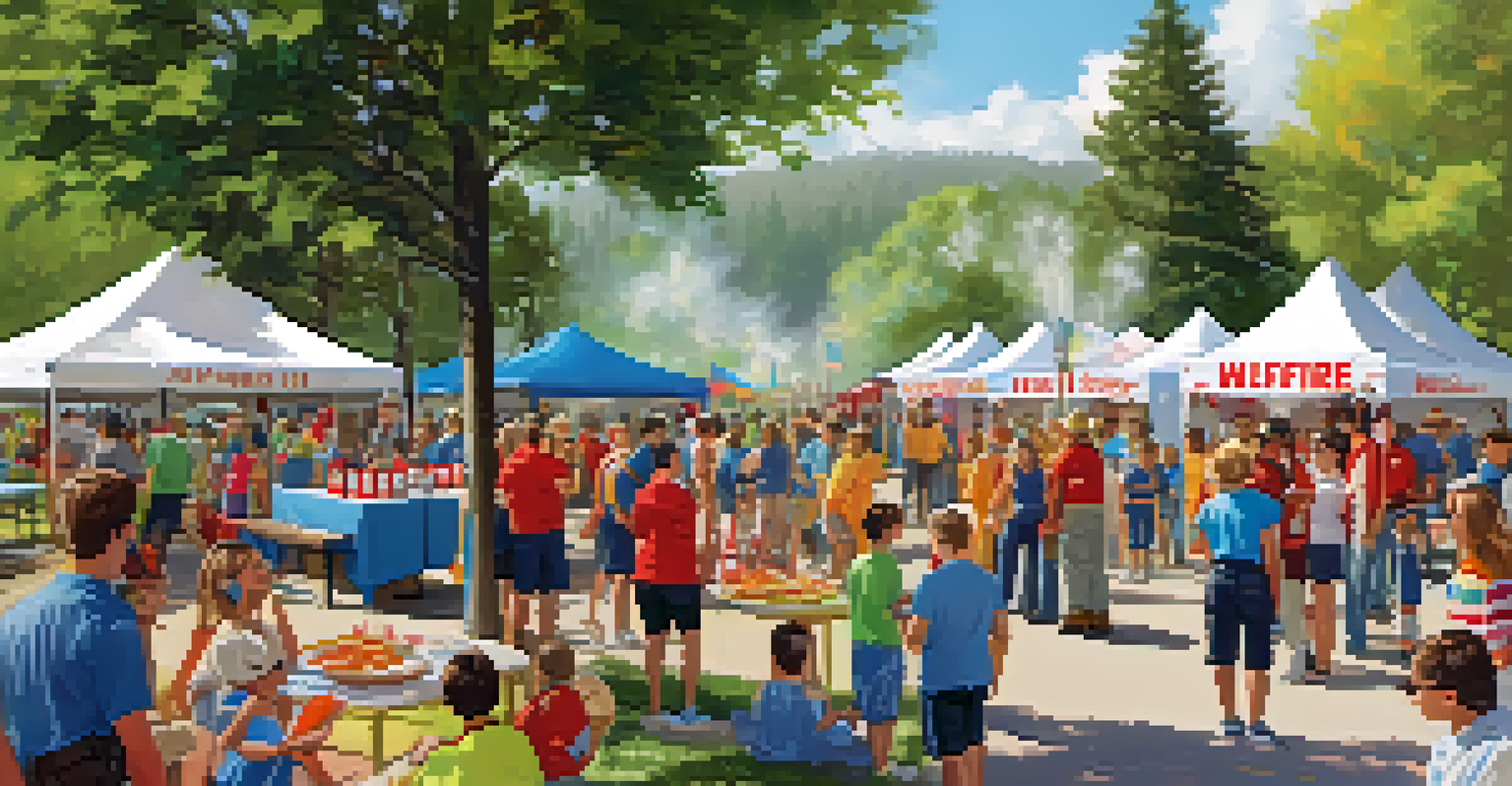Public Awareness Campaigns for Wildfire Preparedness

Understanding the Importance of Wildfire Preparedness
Wildfires can strike with little warning, making preparedness essential for communities. The damage caused by these blazes can be vast, affecting homes, wildlife, and air quality. By educating the public on wildfire risks and preparedness steps, we can significantly reduce the potential impact of these disasters.
An ounce of prevention is worth a pound of cure.
Public awareness campaigns serve as a vital tool in spreading knowledge and resources. They aim to inform residents about the actions they can take before, during, and after a wildfire. This proactive approach can save lives and property, fostering a culture of safety and resilience.
In areas prone to wildfires, having a well-informed community can make all the difference. Campaigns that emphasize clear communication and actionable steps empower residents to protect themselves and their loved ones. Ultimately, preparedness can turn a potentially devastating event into a manageable situation.
Key Components of Effective Awareness Campaigns
The success of a public awareness campaign hinges on clear messaging and accessibility. Campaigns should focus on simple, relatable information that residents can easily understand and act upon. Utilizing various platforms, such as social media, local news, and community events, helps reach a wider audience.

Visual aids, like infographics and videos, can make complex information digestible. For example, a short video demonstrating how to create a defensible space around homes can be more impactful than a lengthy article. Engaging visuals catch attention and stick in people's minds, making them more likely to remember the information.
Community Education is Key
Engaging the community through hands-on education and simulated drills builds confidence and preparedness for wildfire emergencies.
Additionally, involving community leaders or local influencers can lend credibility to the campaign. When familiar faces advocate for preparedness, it resonates deeply with residents. This connection can motivate individuals to take the necessary steps to protect their homes and families.
Utilizing Technology for Greater Reach
In today's digital age, technology can greatly enhance wildfire preparedness campaigns. Mobile apps and websites can provide real-time updates on fire conditions and safety tips. By integrating technology, communities can keep residents informed and engaged during wildfire seasons.
The best way to predict the future is to create it.
Social media platforms offer a unique opportunity to reach diverse demographics quickly. Campaigns can use targeted ads, informative posts, and engaging stories to spread awareness. Encouraging community members to share their preparedness plans can create a ripple effect, inspiring others to take action.
Moreover, online resources can serve as a hub for information, offering checklists, evacuation routes, and local support contacts. By making preparedness information readily available, we empower individuals to be proactive rather than reactive when faced with wildfire threats.
Engaging the Community Through Education
Hands-on education is a cornerstone of effective wildfire preparedness campaigns. Workshops and community meetings can provide valuable opportunities for residents to learn directly from experts. These interactions foster a sense of community spirit while equipping individuals with the knowledge they need.
Simulated drills can also play a vital role in preparing residents for potential wildfire emergencies. Practicing evacuation routes and emergency procedures helps residents feel more confident and ready. When the time comes, they are less likely to panic and more likely to follow their preparedness plans.
Technology Enhances Awareness
Utilizing mobile apps and social media can effectively disseminate real-time information and safety tips to keep residents informed during wildfire seasons.
Furthermore, incorporating local schools into awareness efforts can instill a culture of safety among younger generations. Teaching children about wildfire risks and preparedness can empower them to share this knowledge at home, creating a family approach to safety.
Building Partnerships for Greater Impact
Creating effective wildfire preparedness campaigns often requires collaboration among various stakeholders. Local governments, fire departments, and non-profit organizations can work together to pool resources and expertise. This united front can create a more comprehensive and far-reaching approach to public awareness.
Partnerships with businesses can also amplify campaign efforts. Local shops can display preparedness materials, while larger corporations can sponsor events or educational programs. Such collaborations not only enhance visibility but also demonstrate a community-wide commitment to safety.
Moreover, engaging with environmental organizations can provide insights into the ecological aspects of wildfires. Understanding the relationship between wildfires and the environment can foster a deeper appreciation for prevention efforts, ultimately leading to more robust community involvement.
Overcoming Challenges in Public Awareness Campaigns
Despite their benefits, public awareness campaigns can face several challenges. One common hurdle is misinformation or apathy among residents, which can undermine preparedness efforts. Overcoming these obstacles requires persistent communication and a focus on building trust within the community.
Addressing language barriers is another important consideration. Campaigns should strive to provide materials in multiple languages to ensure all community members can access vital information. This inclusivity not only broadens the reach but also fosters a sense of unity as everyone works toward common goals.
Collaboration Maximizes Impact
Building partnerships among local governments, businesses, and organizations creates a comprehensive approach to wildfire preparedness campaigns.
Additionally, maintaining engagement year-round can be difficult, especially in regions less prone to wildfires. Campaigns must find creative ways to keep the conversation alive, such as hosting seasonal events or regular community check-ins. Consistent engagement ensures that residents remain prepared, even when wildfires are not top of mind.
Measuring the Success of Awareness Campaigns
To truly understand the impact of public awareness campaigns, it's crucial to measure their success. Surveys and feedback forms can help gauge community knowledge and readiness before and after campaigns are implemented. This data can provide valuable insights into what works and what needs improvement.
Tracking participation in workshops, drills, and online resources can also highlight areas of success. High engagement levels often indicate that the community is taking the message to heart and acting on it. Conversely, low participation may signal a need for a different approach or renewed outreach efforts.

Ultimately, continuous evaluation allows for ongoing refinement of campaigns, ensuring they remain relevant and effective. By adapting to community needs and preferences, awareness campaigns can evolve, becoming even more impactful over time.